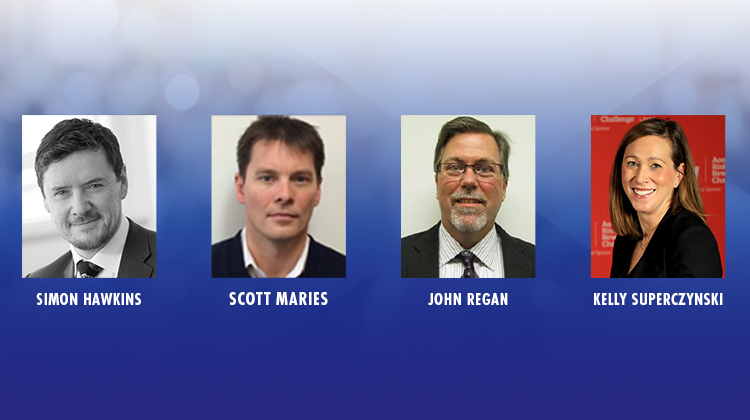Day 1 of our October 2020 meeting saw Scott Maries – CFO of Premia Re, Simon Hawkins – former CFO of Compre, and John Regan – CFO of Swiss Re of America, put on a presentation, moderated by Kelly Superczynski – Aon’s Head of Capital Advisory. The discussion covered everything from legacy balance sheet and reporting matters, to raising capital, and the pace and trends in the market. The presenters were generous with their observations and prognostications for the future of runoff.
Scott Maries identified drivers in the runoff market, including a surge in private equity capital. P&C continues to be an abundant source of business, mostly from places like North America and the UK, with smaller opportunities in Continental Europe. Simon Hawkins added that, while APH transactions are still popular, there is a new surge in short tail business, which requires runoff companies to be more flexible when partnering with less “insurance-savvy” organizations. On this point, Scott replied that most runoff entities continue to prefer asbestos deals, but “there is a lot of red between the cedant’s carried reserves and how much the runoff company needs to take the deal.”
Scott next identified different types of risks in these deals. Lloyds’ “signature” type of business arises from 2016 and prior years of account. And while some recent deals involve shorter tail business with 2 – 3-year payouts, you need “longer dated” LOBs to give you sufficient time to work down the claims (e.g., medical malpractice and workers’ compensation).
John Regan joined the call, noting that the cedant landscape has changed, with more companies trying to manage the legacy piece of their balance sheet. Scott agreed, seeing a recent increase of first-time sellers in the market.
The discussion turned to COVID 19. John felt that the balance sheet impact of COVID 19 will force some players out of, and bring new capital into, the market. Also, companies will move to eliminate legacy business from their balance sheets to make room for ever-increasing COVID exposures. On this point, Simon addressed the business and legal uncertainties of COVID, reflected in current, widely disparate estimates of ultimate COVID exposures. While the liability side of the balance sheet suffers, the asset side will see a hardening market and falling yields. Scott chimed in, opining that a flurry of COVID deals will not come to market until insurers and reinsurers put up sufficient reserves. Certainly, companies are not rushing in to write COVID covers now.
John stated that industry estimates of COVID losses thru June 2020 range from $60B to $100B. In his view, “we’ll still be talking about COVID losses in 20 years.”
On the supply side, Scott sees private equity funds and tiers within pension funds as the latest sources of runoff capital. While capital is easy to access, the real issues are, do you start de novo, partner up with someone else, provide growth capital or invest new capital to grow from the start? A secure foundation for runoff requires regulated entities in key jurisdictions around the globe. John noted here that in the US, the key is to do more deals so that more deals are in the pipeline.
On the topic of IBTs, Scott is an interested observer, letting bigger companies spend 2-3 years’ worth of business planning time figuring them out.
The presentation ended with the group answering questions from the audience.
